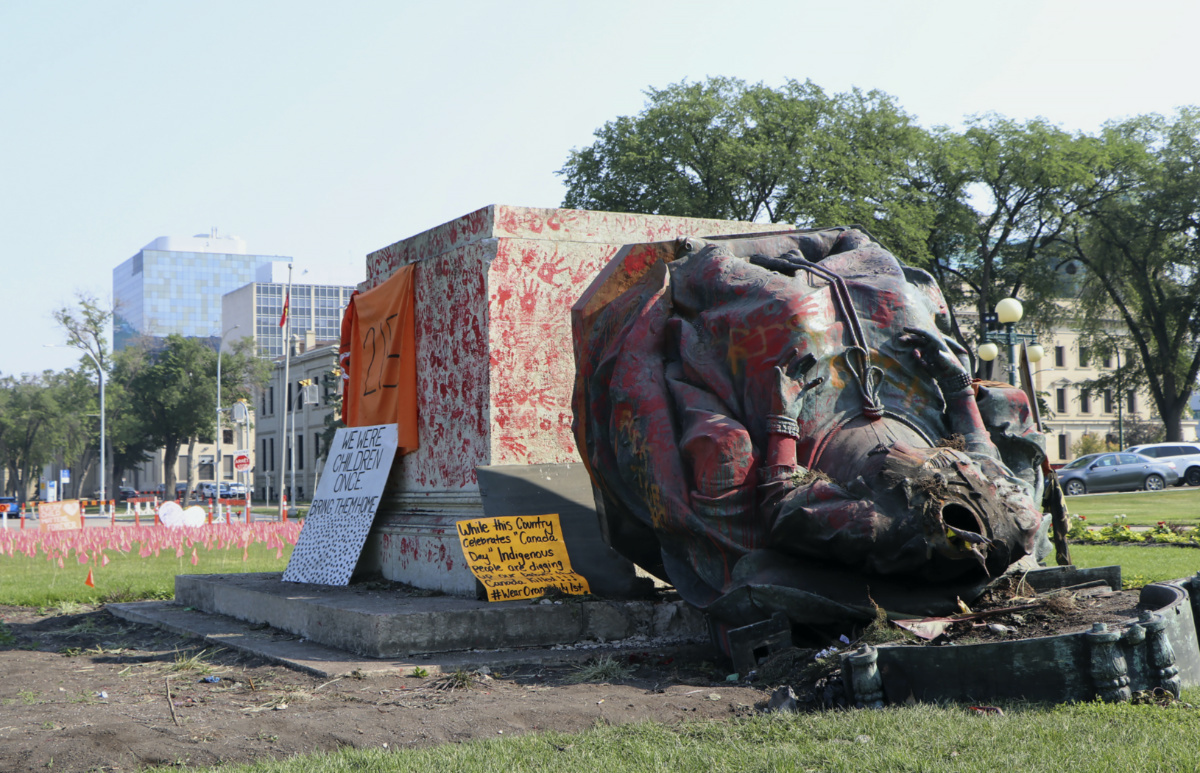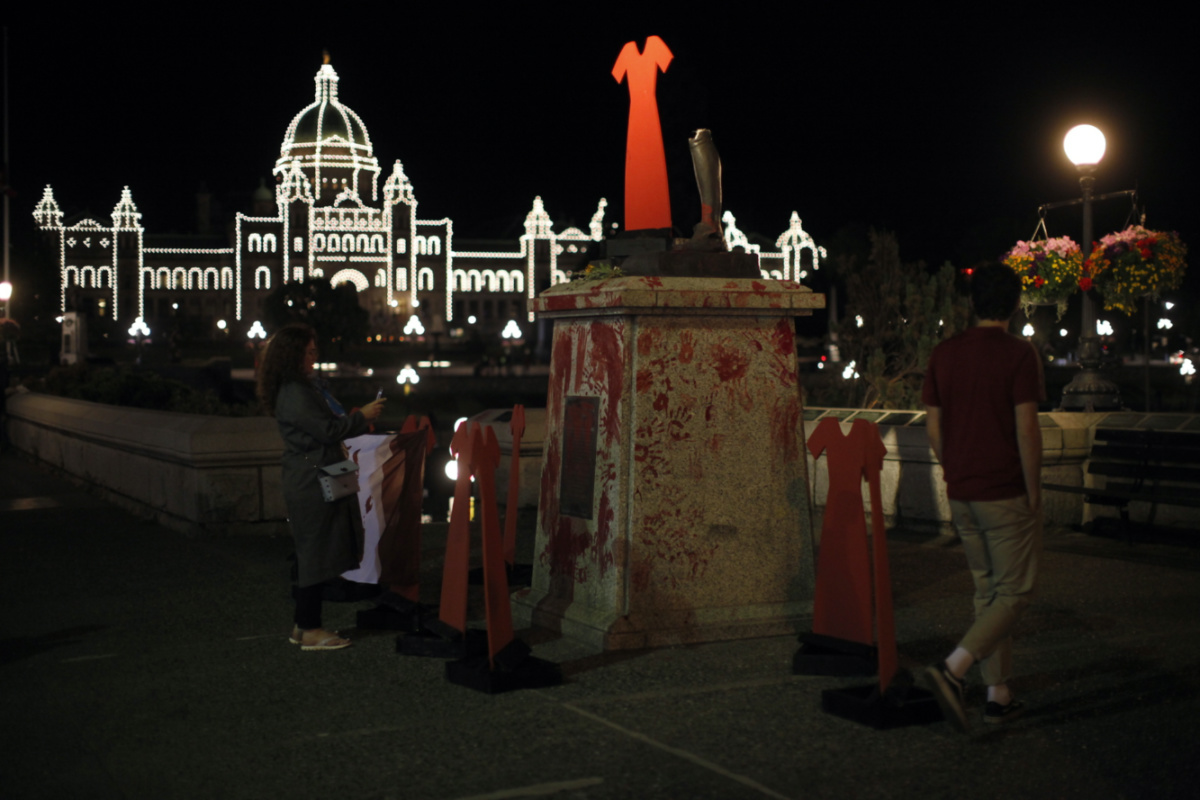Vancouver, British Columbia
AP
Canadian Prime Minister Justin Trudeau on Friday denounced the burning and vandalism of Catholic churches that has followed discovery of unmarked graves and former schools for Indigenous children.
Several Catholic churches have recently been vandalised or damaged in fires following the discovery of more than 1,100 unmarked graves at the sites of three former residential schools run by the church in British Columbia and Saskatchewan that generations of Indigenous children had been forced to attend.
The nation also saw a series of attacks Thursday – Canada Day – on statues of Queen Victoria, Queen Elizabeth and other historical figures.

A headless statue of Queen Victoria is seen overturned and vandalised at the provincial legislature in Winnipeg, on Friday, 2nd July 2021. Her statue and a statue of Queen Elizabeth II were toppled on Canada Day during demonstrations concerning Indigenous children who died at residential schools. PICTURE: Kelly Geraldine Malone/The Canadian Press via AP.
Trudeau, himself a Catholic, said he understands the anger many people feel toward the Federal Government and Catholic Church. The government has apologised for the schools and Trudeau has called on Pope Francis, too, to make a formal apology.
“It’s real and it is fully understandable given the shameful history we are all become more aware of,” he told a news conference.
“I can’t help but think that burning down churches is actually depriving people who are in need of grieving and healing and mourning from places where they can grieve and reflect and look for support.”
On Thursday, statues of Queen Victoria and Queen Elizabeth on the grounds of the Manitoba legislature were tied with ropes and pulled down by a crowd.
The statue of Queen Victoria was covered in red paint and its base had red handprints on it. On the steps behind the statue were hundreds of tiny shoes, placed there to recognise the children who went to residential schools.
Arlen Dumas, grand chief of the Assembly of Manitoba Chiefs, was at a separate event at the time but said he was shocked at what happened.
“I personally wouldn’t have participated in that,” he said, though he added, “Mind you, it has been a very triggering time over the past few weeks.”
“It’s unfortunate that they chose to express themselves the way that they did. But it’s actually a symbol of the fact that there is a lot of hurt and that there’s a lot of frustration and anger with just how things have happened,” Dumas said.
Premier Brian Pallister called the vandalism “a major setback for those who are working toward real reconciliation”.
“Those who commit acts of violence will be pursued actively in the courts. All leaders in Manitoba must strongly condemn acts of violence and vandalism, and at the same time, we must come together to meaningfully advance reconciliation,” he said in a statement.

The statue of English explorer Captain James Cook was vandalized and removed from it’s base and tossed into the inner harbor and replaced with red hand prints and a red dress in protest of missing and murdered Indigenous women and girls in Victoria, on Thursday, 1st July. PICTURE: Chad Hipolito/The Canadian Press via AP.
In other incidents on Canada Day, a statue of Queen Victoria in Kitchener, Ontario, was doused in red paint.
In Victoria, British Columbia, a statue of Captain James Cook was dismantled and thrown into the harbour. The statue was replaced with a wooden cutout of a red dress – a symbol representing murdered and missing Indigenous women – and its base was smeared with red handprints.
In St John’s, Newfoundland and Labrador, two prominent buildings and a statue dedicated to the local police force were vandalized with bright red paint.
Earlier this week, a First Nations group in British Columbia said it had used ground-penetrating radar to find 182 human remains in unmarked graves at a site close to a former residential near Cranbrook, 845 kilometres east of Vancouver.
That followed reports of similar massive findings at two other such church-run schools, one of more than 600 unmarked graves in southern Saskatchewan and another of 215 bodies in British Columbia.
Some 150,000 Indigenous children were forced to attend residential schools, which operated for more than 120 years in Canada. More than 60 per cent of the schools were run by the Catholic Church.






